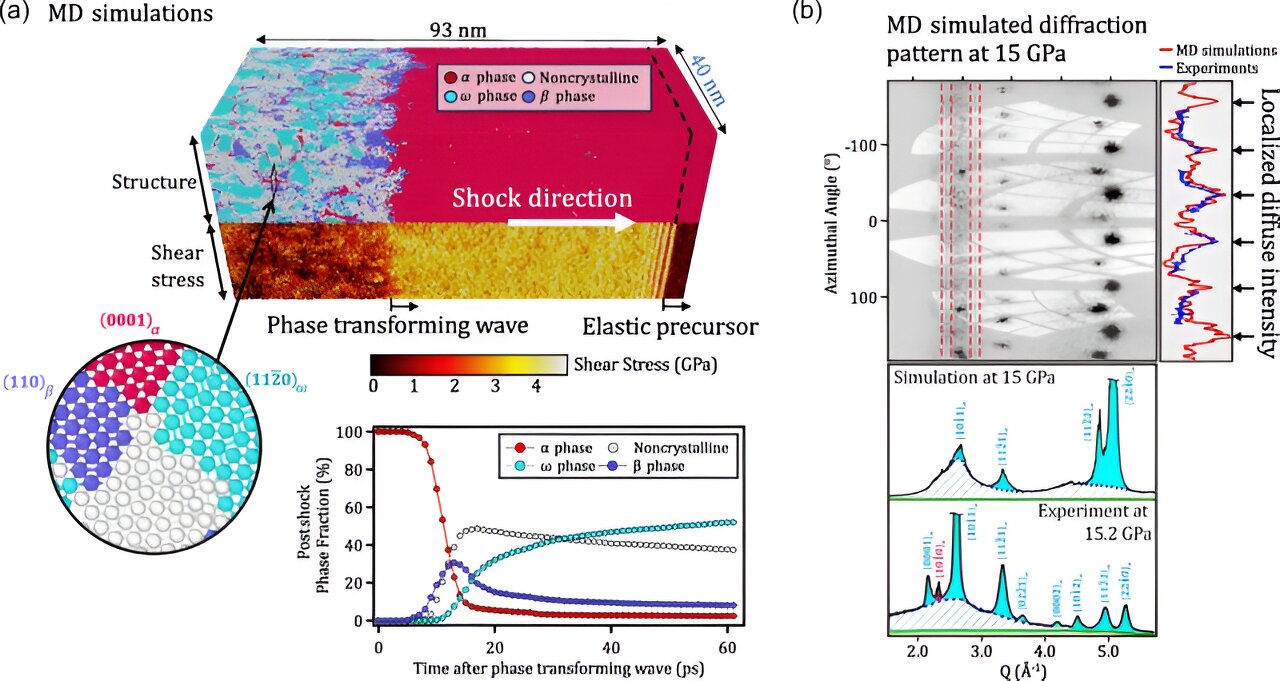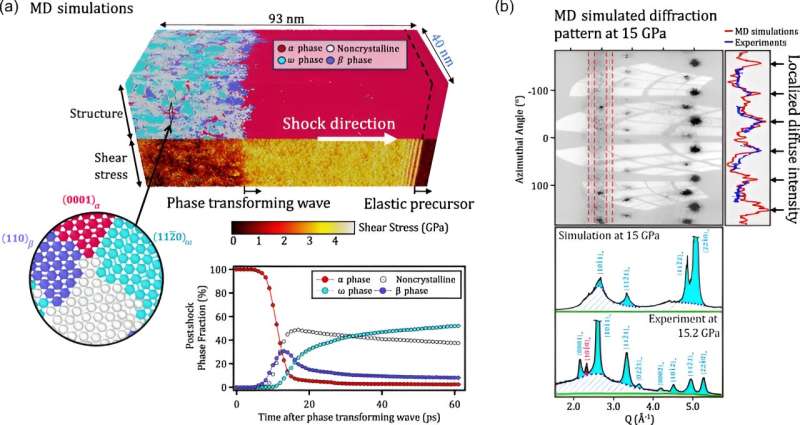

Materials are crucial to modern technology, especially those used in extreme environments like nuclear energy systems and military applications. These materials need to withstand intense pressure, temperature and corrosion. Understanding their lattice-level behavior under such conditions is essential for developing next-generation materials that are more resilient, cheaper, lighter and sustainable.
Lawrence Livermore National Laboratory (LLNL) scientists and collaborators compressed single crystal samples of the metal zirconium and found that under high pressure, the material deformed in surprisingly complex ways. The research appears in two journals, Physical Review Letters and Physical Review B.
Materials under high-stress conditions relieve shear stresses through mechanisms like dislocation slip, crystallographic twinning, shear-induced amorphization, phase transition and fracture.
“Understanding these microscopic mechanisms is vital for developing predictive models of material performance,” said LLNL scientist Saransh Soderlind, lead author of the study in Physical Review Letters.
All metals plastically deform—that is, permanently change their shape—under compression primarily due to the motion of defects called dislocations on certain planes in specific crystallographic directions. In the case of zirconium, there is additional complexity due to a change in the crystal structure with pressure.
“The precise knowledge of the crystallographic planes and the direction a material deforms can allow us to develop models describing the mechanical behavior of metals at extreme levels of compression,” Soderlind said. “In our work on zirconium, we employed new experimental techniques, which revealed how elemental metals deform in an unexpected and highly complex way.”
The team used femtosecond in-situ X-ray diffraction to observe the behavior of single-crystal zirconium compressed to high pressure over nanosecond timescales. The team detected the presence of atomic disorder, a phenomenon never observed in an elemental metal, and discovered multiple pathways for crystal structure transformation, another first-of-its-kind observation.
This disorder and these multiple-phase transition pathways were not observed in polycrystalline zirconium, adding to the novelty of the study. Multi-million atom molecular dynamics simulations using a machine-learned potential corroborated the study’s experimental observations.
“These findings reveal a more intricate picture of deformation in metals under extreme conditions than previously understood. This rich tapestry of atomic movements is likely commonplace in other materials at high pressures,” said LLNL scientist Raymond Smith.
Zirconium alloys are used in the nuclear industry as fuel rod cladding due to zirconium’s high strength and low neutron absorption cross-section. It is also extensively used in extreme chemical environments.
More information:
Saransh Singh et al, Unexpected Observation of Disorder and Multiple Phase-Transition Pathways in Shock-Compressed Zr, Physical Review Letters (2024). DOI: 10.1103/PhysRevLett.133.096101
P. G. Heighway et al, Diffuse scattering from dynamically compressed single-crystal zirconium following the pressure-induced 𝛼→𝜔 phase transition, Physical Review B (2024). DOI: 10.1103/PhysRevB.110.054113
Provided by
Lawrence Livermore National Laboratory
Citation:
Zirconium metals under extreme conditions found to deform in surprisingly complex ways (2024, September 17)
retrieved 17 September 2024
from https://phys.org/news/2024-09-zirconium-metals-extreme-conditions-deform.html
This document is subject to copyright. Apart from any fair dealing for the purpose of private study or research, no
part may be reproduced without the written permission. The content is provided for information purposes only.